
Keywords: safety

|
Routes of Introduction of Anopheles gambiae Into Remote Islands in the Indian OceanR. E. Ditter, M. Campos, M. W. Crepeau, J. Pinto, A. Toilibou, Y. Amina, Y. Lee, A. J. Cornel and G. C. Lanzaro, , 2023.
The malaria vector Anopheles gambiae s.s., is a primary malaria vector throughout sub-Saharan Africa including the islands of the Comoros archipelago (Anjouan, Grande Comore, Mayotte and Mohéli). These islands are located at the northern end of the Mozambique Channel in eastern ... Keywords: containment, gene drive synthetic, genetically engineered mosquitoes, mosquito, policy, regulation, safety |
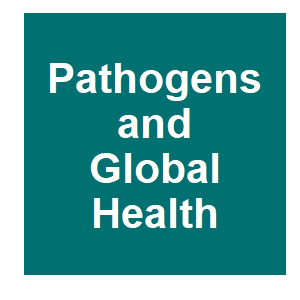
|
Infravec2 guidelines for the design and operation of containment level 2 and 3 insectaries in EuropeE. Pondeville, A.-B. Failloux, F. Simard, P. Volf, A. Crisanti, R. E. Haghighat-Khah, N. Busquets, F. X. Abad, A. J. Wilson, R. Bellini, S. Marsh Arnaud, A. Kohl and E. Veronesi, Pathogens and Global Health, 2022.
ABSTRACTWith the current expansion of vector-based research and an increasing number of facilities rearing arthropod vectors and infecting them with pathogens, common measures for containment of arthropods as well as manipulation of pathogens are becoming essential for the design ... Keywords: containment, gene drive synthetic, genetically engineered mosquitoes, mosquito, policy, regulation, safety |
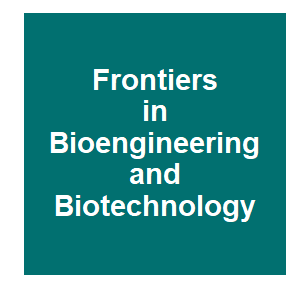
|
Intronic gRNAs for the Construction of Minimal Gene Drive SystemsA. Nash, P. Capriotti, A. Hoermann, P. A. Papathanos and N. Windbichler, Frontiers in Bioengineering and Biotechnology, 10. 2022.
Gene drives are promising tools for the genetic control of insect vector or pest populations. CRISPR-based gene drives are generally highly complex synthetic constructs consisting of multiple transgenes and their respective regulatory elements. This complicates the generation of ... Keywords: containment, gene drive synthetic, genetically engineered mosquitoes, mosquito, policy, regulation, safety |
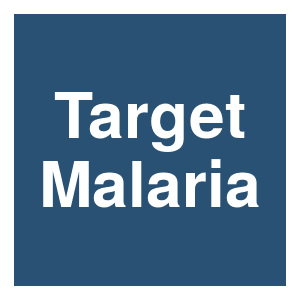
|
Importation of the non gene drive genetically modified male bias mosquito strain into Burkina FasoA. Diabate, Target Malaria, 2022.
On March 16 and 21, the team at the Institut de Recherche en Sciences de la Santé (IRSS), Target Malaria’s partner institution in Burkina Faso, received packages containing live genetically modified mosquito eggs from Italy. The National Biosafety Agency (ANB) officers were at ... Keywords: containment, gene drive synthetic, genetically engineered mosquitoes, mosquito, policy, regulation, safety |

|
Self-eliminating Genes Tested on Disease-carrying MosquitoesM. Taylor, Laboratory Equipment, 2022.
There’s good reason why CRISPR-Cas9 gene editing is not allowed at the germline. While international commissions are working hard to make this a possibility, potential unknown effects further down the ancestry line raise concerns about the process. The insect equivalent of ... Keywords: containment, gene drive synthetic, genetically engineered mosquitoes, mosquito, policy, regulation, safety |

|
Engineering a self-eliminating transgene in the yellow fever mosquito, Aedes aegyptiK. Chae, C. Dawson, C. Valentin, B. Contreras, J. Zapletal, K. M. Myles and Z. N. Adelman, PNAS Nexus, 2022.
Promising genetics-based approaches are being developed to reduce or prevent the transmission of mosquito-vectored diseases. Less clear is how such transgenes can be removed from the environment, a concern that is particularly relevant for highly invasive gene drive transgenes. ... Keywords: containment, gene drive synthetic, genetically engineered mosquitoes, mosquito, policy, regulation, safety |

|
UC Davis — Malaria Gene Drive Feasibility AnalysisGood Ventures, Good Ventures, 2022.
Open Philanthropy recommended a grant of $10,248,967 over three years to UC Davis to support subsequent stages of a feasibility analysis of a potential test of gene drives for malaria control on the adjoining West African islands of São Tomé and Príncipe. The work, led by Dr. ... Keywords: containment, gene drive synthetic, genetically engineered mosquitoes, mosquito, policy, regulation, safety |

|
UC San Diego Biology Lab Receives $1.4M Grant to Fight Malaria SpreadE. Dameron, UC San Diego News Center, 2022.
Scientists at the University of California San Diego are hard at work on new genetic technologies intended for use in curbing mosquito populations, fighting the spread of malaria and mitigating the hazards associated with the deployment of gene-editing systems in the wild. That ... Keywords: containment, gene drive synthetic, genetically engineered mosquitoes, mosquito, policy, regulation, safety |

|
New Arthropod Containment Recommendations Provide Essential Guidance for Safety of Gene Drive ResearchS. James and D. O’Brochta, The American Journal of Tropical Medicine and Hygiene, tpmd211148. 2021.
Gene drive technologies have not yet been field tested, however, there are no data on the possible environmental or health effects of releasing gene drive–modified organisms. For this reason, there have been widespread calls for additional guidance on risk assessment and ... Keywords: containment, gene drive synthetic, genetically engineered mosquitoes, mosquito, policy, regulation, safety |
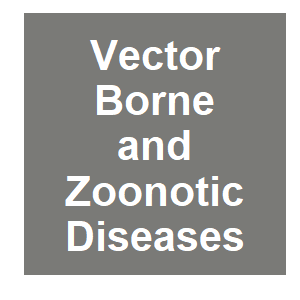
|
Containment Practices for Arthropods Modified with Engineered Transgenes Capable of Gene Drive Addendum 1 to the Arthropod Containment Guidelines, Version 3.2American Committee of Medical Entomology, Vector-Borne and Zoonotic Diseases, 2021.
Responsible conduct of research is a cornerstone of rigorous scientific discovery. Institutional committees, independent advisory panels, and expert steering groups are among the frameworks in academia meant to provide guidance and assurances that research activities do not ... Keywords: containment, gene drive synthetic, genetically engineered mosquitoes, mosquito, policy, regulation, safety |

|
European Parliament adopts text on biodiversity, calls for no releases of gene drive organismsThird World Network, TWN Biosafety Briefing, 2021.
Gene drive technologies, such as GM mosquitoes for the control of vector-borne diseases, pose serious and novel threats for the environment and nature, including irreversible changes to food chains and ecosystems, and losses of biodiversity, on which the world’s poorest depend ... Keywords: containment, gene drive synthetic, genetically engineered mosquitoes, mosquito, policy, regulation, safety |
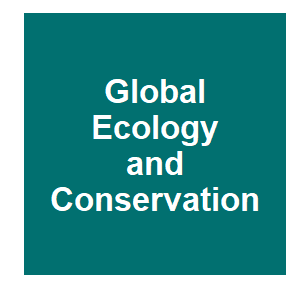
|
Ecological vulnerability analysis for suppression of Drosophila suzukii by gene drivesC. R. Lalyer, L. Sigsgaard and B. Giese, Global Ecology and Conservation, 32:e01883. 2021.
Synthetic gene drives are transgenic constructs that aim to bias heredity and thereby influence the characteristics and fate of populations regarding abundance and evolution. Aside from irreversible effects in ecosystems that could be triggered by the release of a gene drive, ... Keywords: containment, gene drive synthetic, genetically engineered mosquitoes, mosquito, policy, regulation, safety |
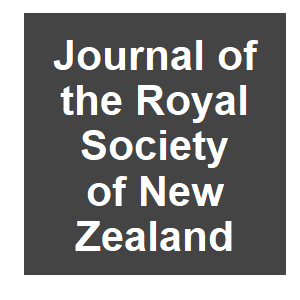
|
Gene drive and RNAi technologies: a bio-cultural review of next-generation tools for pest wasp management in New ZealandS. Palmer, P. K. Dearden, O. R. Mercier, A. King-Hunt and P. J. Lester, Journal of the Royal Society of New Zealand, 1-18. 2021.
There is a global need for novel, next-generation technologies and techniques to manage pest species. We review work on potential step-changing technologies for large landscape (>1000 hectares) pest management of social Vespula wasps. We also review M?ori perspectives on these ... Keywords: containment, gene drive synthetic, genetically engineered mosquitoes, mosquito, policy, regulation, safety |
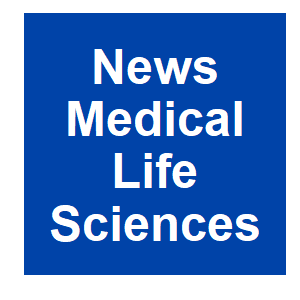
|
WHO releases new guidance for deployment of genetically modified mosquitoesE. Henderson, News Medical Life Sciences, 2021.
The World Health Organization (WHO) has released new guidance for the deployment of genetically modified (GM) mosquitoes to combat vector-borne diseases like malaria and dengue. GM mosquitoes may carry a gene that kills female progeny and the technology can be used against the ... Keywords: containment, gene drive synthetic, genetically engineered mosquitoes, mosquito, policy, regulation, safety |

|
Genetically modified mosquitoes; WHO issues new guidance for researchDTE Staff, Down To Earth, 2021.
Genetically-modified mosquitoes or GMMs have been used across the world to control mosquitoes. GMMs have been able to bring down the population of the Aedes aegypti by 90 per cent in countries like Brazil, the Cayman Islands, Panama and Malaysia. But there have never been any ... Keywords: containment, gene drive synthetic, genetically engineered mosquitoes, mosquito, policy, regulation, safety |

|
WHO issues new guidance for research on genetically modified mosquitoes to fight malaria and other vector-borne diseasesWHO, reliefweb, 2021.
New guidance from the World Health Organization (WHO) sets essential standards to inform future research and development on genetically modified mosquitoes, particularly in addressing issues relating to ethics, safety, affordability and effectiveness. Malaria and other ... Keywords: containment, gene drive synthetic, genetically engineered mosquitoes, mosquito, policy, regulation, safety |

|
Guidance framework for testing of genetically modified mosquitoes, second editionWHO, WHO-TDR, 2021.
For more than 2 decades, scientists have been working to harness the promise of molecular biology to develop genetically modified mosquitoes (GMMs) for use as public health tools to prevent the transmission of vector-borne diseases. Responding to a need for additional standards ... Keywords: containment, gene drive synthetic, genetically engineered mosquitoes, mosquito, policy, regulation, safety |

|
US Gene Drive Governance: A Special Feature in Health SecurityL. Warmbrod, A. Kobokovich, R. West, G. K. Gronvall and M. Montague, Health Security, 19:131-132. 2021.
The novel potential of gene drives and related genetic pest control measures highlights a gap in the oversight of products using such technologies in the United States. The US Coordinated Framework for Regulation of Biotechnology, as applied by US Environmental Protection Agency, ... Keywords: containment, gene drive synthetic, genetically engineered mosquitoes, mosquito, policy, regulation, safety |

|
Self-Deleting Genes Project To Tackle Mosquito-Borne DiseasesD. Ozdemir, INTERESTING ENGINEERING, 2021.
Did you know that mosquitoes kill at least 725,000 persons every year? They truly are one of the world's deadliest animals which is the reason why scientists from all around are trying to find new ways of dealing with them. Controlling mosquito populations and preventing them ... Keywords: containment, gene drive synthetic, genetically engineered mosquitoes, mosquito, policy, regulation, safety |

|
Demystifying the Risk Assessment Process for Laboratory-Based Experiments Utilizing Invasive Genetic Elements: It Is More Than Gene DriveZ. N. Adelman, Applied Biosafety, 2021.
Advances in recombinant DNA approaches have resulted in the development of transgene architectures that severely bias their own inheritance, a process commonly referred to as ?gene drive.? The rapid pace of development, combined with the complexity of many gene drive approaches, ... Keywords: containment, gene drive synthetic, genetically engineered mosquitoes, mosquito, policy, regulation, safety |

|
Edit, undo: Temporary gene editing could help solve the mosquito problemL. Dormehl, digitaltrends, 2020.
But if SyFy original movies have taught us anything, it’s that genetically tweaking organisms and then releasing them can… well, not go quite according to plan.With that in mind, a new Texas A&M AgriLife Research project seeks to test out genetic modifications of mosquitos ... Keywords: containment, gene drive synthetic, genetically engineered mosquitoes, mosquito, policy, regulation, safety |

|
Self-deleting genes promise risk-free genetic engineering of mosquitoesD. Quick, New Atlas, 2020.
A new project by Texas A&M AgriLife Research is looking to enable "test runs" of genetic changes to mosquitoes that are automatically deleted. Various angles of attack using genetic engineering to combat mosquitoes have been pursued in recent years, including modifying them so ... Keywords: containment, gene drive synthetic, genetically engineered mosquitoes, mosquito, policy, regulation, safety |

|
Self-deleting genes to be tested as part of mosquito population control conceptB. Hays, UPI, 2020.
Scientists at Texas A&M have developed a new technique for altering the genes of mosquitoes -- the new technology will cause genetic changes to self-delete from the mosquitoes' genome. Thanks to the breakthrough, described Monday in the Philosophical Transactions of the Royal ... Keywords: containment, gene drive synthetic, genetically engineered mosquitoes, mosquito, policy, regulation, safety |

|
$3.9M project on self-deleting genes takes aim at mosquito-borne diseasesO. Kuchment, AGRILIFE Today, 2020.
To control mosquito populations and prevent them from transmitting diseases such as malaria, many researchers are pursuing strategies in mosquito genetic engineering. A new Texas A&M AgriLife Research project aims to enable temporary “test runs” of proposed genetic changes in ... Keywords: containment, gene drive synthetic, genetically engineered mosquitoes, mosquito, policy, regulation, safety |

|
Self-deleting genes tested as part of the concept of mosquito population controlcharlottelarson, NEWYORK NEWS TIMES, 2020.
Most genetic engineering strategies designed to control mosquito populations, and their ability to spread diseases such as malaria, require gene editing to be combined with gene drives. Gene drives allow altered DNA to spread rapidly throughout the population. Keywords: containment, gene drive synthetic, genetically engineered mosquitoes, mosquito, policy, regulation, safety |

|
A Gene Drive Could Wipe Out Mosquitoes. But What If We Want To Turn It Off?A. Winkler, freethink, 2020.
Gene drives are powerful tools: they allow scientists to hack how animals pass down genes to their offspring. They could allow us to wipe out malaria-carrying mosquitoes, preserve endangered species, or fight off crop-eating pests. But once it's out in the wild, a gene drive ... Keywords: containment, gene drive synthetic, genetically engineered mosquitoes, mosquito, policy, regulation, safety |

|
Invasive Species Control and Resolution of Wildlife Damage Conflicts: A Framework for Chemical and Genetically Based Management MethodsL. Clark, J. Eisemann, J. Godwin, K. E. Horak, K. Oh, J. O’Hare, A. Piaggio, K. Pepin and E. Ruell, GMOs: Implications for Biodiversity Conservation and Ecological Processes, 2020.
Vertebrate wildlife damage management relates to developing and employing methods to mitigate against damage caused by wildlife in the areas of food production, property damage, and animal or human health and safety. Of the many management tools available Keywords: containment, gene drive synthetic, genetically engineered mosquitoes, mosquito, policy, regulation, safety |

|
Evaluation of genetically modified mosquitoes for the control of vector-borne diseasesGlobal Malaria Programme, WHO - Position Statement, 2020.
In the spirit of fostering innovation, WHO takes the position that all potentially beneficial new technologies, including GMMs, should be investigated to determine whether they could be useful in the continued fight against diseases of public health concern. Such research should ... Keywords: containment, gene drive synthetic, genetically engineered mosquitoes, mosquito, policy, regulation, safety |
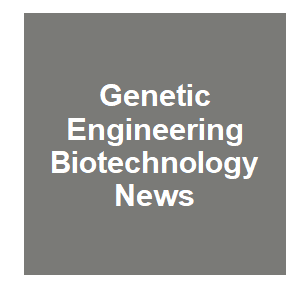
|
Gene Drive Control Worry Eased by Genetic Neutralizing ElementsStaff, Genetic Engineering and Biotechnology News, 2020.
Bier and his colleagues have developed two new active genetic systems that address such risks by halting or eliminating gene drives in the wild, offering two new solutions based on elements developed in the common fruit fly. T Keywords: containment, gene drive synthetic, genetically engineered mosquitoes, mosquito, policy, regulation, safety |

|
Active Genetic Neutralizing Elements for Halting or Deleting Gene DrivesX.-R. S. Xu, E. A. Bulger, V. M. Gantz, C. Klanseck, S. R. Heimler, A. Auradkar, J. B. Bennett, L. A. Miller, S. Leahy, S. S. Juste, A. Buchman, O. S. Akbari, J. M. Marshall and E. Bier, Molecular Cell, 2020.
Here we describe two self-copying (or active) guide RNA-only genetic elements, called e-CHACRs and ERACRs. These elements use Cas9 produced in trans by a gene drive either to inactivate the cas9 transgene (e-CHACRs) or to delete and replace the gene drive (ERACRs). Keywords: containment, gene drive synthetic, genetically engineered mosquitoes, mosquito, policy, regulation, safety |

|
Biologists create new genetic systems to neutralize gene drivesUniversity of California San Diego, ScienceDaily, 2020.
Now, scientists at the University of California San Diego and their colleagues have developed two new active genetic systems that address such risks by halting or eliminating gene drives in the wild. Keywords: containment, gene drive synthetic, genetically engineered mosquitoes, mosquito, policy, regulation, safety |

|
Engineering multiple species-like genetic incompatibilities in insectsM. Maselko, N. Feltman, A. Upadhyay, A. Hayward, S. Das, N. Myslicki, A. J. Peterson, M. B. O’Connor and M. J. Smanski, Nature Communications, 11:4468. 2020.
Here, we demonstrate a general approach to create engineered genetic incompatibilities (EGIs) in the model insect Drosophila melanogaster. Keywords: containment, gene drive synthetic, genetically engineered mosquitoes, mosquito, policy, regulation, safety |
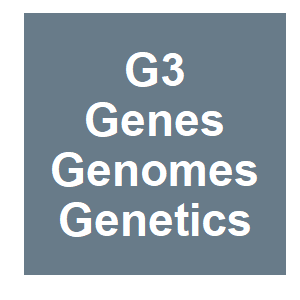
|
Can a population targeted by a CRISPR-based homing gene drive be rescued?N. O. Rode, V. Courtier-Orgogozo and F. Débarre, G3-Genes Genomes Genetics, 2020.
N. O. Rode, V. Courtier-Orgogozo and F. Débarre (2020). G3 doi: 10.1534/g3.120.401484 Developing countermeasures is important to control the spread of gene drives, should they result in unanticipated damages. One proposed countermeasure is the introduction of individuals ... Keywords: containment, gene drive synthetic, genetically engineered mosquitoes, mosquito, policy, regulation, safety |

|
Nigerian government restates commitment to safety in applying modern biotechnologyAgencies, today ng, 2020.
The National Biosafety Management Agency (NBMA) has reiterated its commitment to ensure the safety of the public while applying modern biotechnology to boost food security and economic development of citizens. Dr Rufus Ebegba, Director-General, NBMA, gave the assurance at a ... Keywords: containment, gene drive synthetic, genetically engineered mosquitoes, mosquito, policy, regulation, safety |

|
EPA Approves Genetically Modified Mosquito Trial For Florida KeysNancy Klingener, WLRN, 2020.
A plan to test genetically modified mosquitoes in the Florida Keys has received approval from the federal government. Keywords: containment, gene drive synthetic, genetically engineered mosquitoes, mosquito, policy, regulation, safety |

|
EPA Grants First Permit to Test Genetically Modified MosquitoesAdam Allington, Bloomberg Law, 2020.
British biotech company Oxitec Ltd was granted an experimental use permit to release a genetically engineered type of the mosquito species Aedes aegypti, which is a known vector of Zika virus and viruses that cause yellow fever and dengue fever, the Environmental Protection ... Keywords: containment, gene drive synthetic, genetically engineered mosquitoes, mosquito, policy, regulation, safety |

|
EPA Approves Experimental Use Permit to Test Innovative Biopesticide Tool to Better Protect Public HealthEPA, EPA, 2020.
Today, after extensive evaluation of the best available science and public input, the U.S. Environmental Protection Agency (EPA) has granted an experimental use permit (EUP) to Oxitec Ltd. to field test the use of genetically engineered Aedes aegypti mosquitoes as a way to reduce ... Keywords: containment, gene drive synthetic, genetically engineered mosquitoes, mosquito, policy, regulation, safety |

|
Auditing preparedness for vector control field studiesC. M. Collins and M. M. Quinlan, American Journal of Tropical Medicine and Hygiene, 102:707-710. 2020.
The value of baseline entomological data to any future area-wide release campaign relies on the application of consistent methods to produce results comparable across different times and places in a stepwise progression to larger releases. Traditionally, standard operating ... Keywords: containment, gene drive synthetic, genetically engineered mosquitoes, mosquito, policy, regulation, safety |

|
Can a population targeted by a CRISPR-based homing gene drive be rescued?N. O. Rode, V. Courtier-Orgogozo and F. Débarre, bioRxiv, 2020.03.17.995829. 2020.
CRISPR-based homing gene drive is a genetic control technique aiming to modify or eradicate natural populations through the release of individuals carrying an engineered piece of DNA that can be inherited by all their progeny. Developing countermeasures is important to control ... Keywords: containment, gene drive synthetic, genetically engineered mosquitoes, mosquito, policy, regulation, safety |

|
Gene Drive FilmSave Our Seeds, , 2020.
This is a video based on the findings in GENE DRIVES: A report on their science, applications, social aspects, ethics and regulations which you can find here. There was a Symposium on May 24, 2019 that covers the topics in the report and the presentations at that symposium can ... Keywords: containment, gene drive synthetic, genetically engineered mosquitoes, mosquito, policy, regulation, safety |

|
Gene Drive Symposium-Critical Science SwitzerlandCritical Scientists Switzerland; European Network of Scientists for Social and Environmental Responsibility; Vereinigung Deutscher Wissenschaftler, , 2019.
Keywords: containment, gene drive synthetic, genetically engineered mosquitoes, mosquito, policy, regulation, safety |
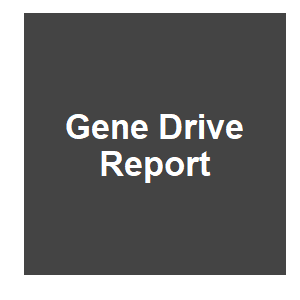
|
Gene Drives: A report on their science, applications, social aspects, ethics and regulationsH. Dressel, Critical Scientists Switzerland; European Network of Scientists for Social and Environmental Responsibility; Vereinigung Deutscher Wissenschaftler, 2019.
Engineered Gene Drives are a new form of genetic modification that provides the tools for permanently modifying or potentially even eradicating species or populations in the wild. Unlike the previous genetically modified organisms (GMOs), gene drive organisms (GDOs) are not meant ... Keywords: containment, gene drive synthetic, genetically engineered mosquitoes, mosquito, policy, regulation, safety |

|
The ethical implications of population suppression and the irreversibility of gene drivesJ. Kim, International Journal of Life Sciences Research, 2018.
This paper aims to examine the current situation by presenting important ethical arguments that include Chardin’s principle of irreversibility and Weiss’ beliefs on intergenerational equity, ideals upheld by the United Nations Keywords: containment, gene drive synthetic, genetically engineered mosquitoes, mosquito, policy, regulation, safety |

|
Developing standard operating procedures for gene drive research in disease vector mosquitoesZ. N. Adelman, D. Pledger and K. M. Myles, Pathogens and Global Health, 111:436-447. 2018.
Here we discuss information to be considered by principal investigators, biosafety officers, and institutional biosafety committees as they work together to develop SOPs for experiments involving gene drive in arthropods, and describe various courses of action that can be used ... Keywords: containment, gene drive synthetic, genetically engineered mosquitoes, mosquito, policy, regulation, safety |

|
Economic issues to consider for gene drivesMitchell, PDB, Z.; McRoberts, N., Journal of Responsible Innovation, 5:S180-S202. 2018.
We examine four economic issues regarding gene drive applications made possible by gene editing technologies. First, whether gene drives are self-sustaining or self-limiting will largely determine which types of organizations have incentives to develop and deploy gene drives and ... Keywords: containment, gene drive synthetic, genetically engineered mosquitoes, mosquito, policy, regulation, safety |

|
CRISPR-Cas9: Gene Drive SafeguardsWyss Institute, Harvard University, 2015.
In this animation, learn how effective safeguarding mechanisms developed at the Wyss Institute and Harvard Medical School can be applied to ensure gene drive research is done responsibly in the laboratory. These safeguards enable responsible scientific investigation into how gene ... Keywords: containment, gene drive synthetic, genetically engineered mosquitoes, mosquito, policy, regulation, safety |

Contact
David O’Brochta
Foundation for the
National Institutes of Health
geneconvenevi@fnih.org
RSS

